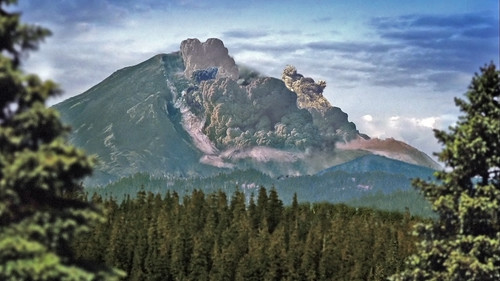
Two new Forest Service films have been honored with prestigious Silver Telly Awards for excellence in non-fiction filmmaking.
“Eruption of Life” is a 17-minute documentary detailing the amazing recovery of ecosystems around Washington’s Mount St. Helens following the devastating eruption there in 1980. The film recreates the catastrophe, then explores the vibrant evidence of plants and animals that are thriving in this once-barren landscape. The U.S. Forest Service manages the Mount St. Helens National Volcanic Monument.
"Bringing the amazing story of the eruption, return of life and ongoing scientific discovery at Mount St. Helens to the screen has been a rewarding experience," said Peter Frenzen, monument scientist.
The film is the main attraction at the Johnston Ridge Observatory Visitor Center near the mountain. At its conclusion, the screen rises and the curtain opens to reveal the still smoking crater and surrounding landscape.

"Mount St. Helens is a must-see addition to everyone's summer vacation list,” said Frenzen. “Our visitors can now enjoy state-of-the-art HD cinematography, animation, and the opportunity to gaze into the crater and experience the eruption of life first hand,” Frenzen added.
The second video, “Living Laboratory,” is a 6-minute film that also plays in the center. It follows the efforts of scientists and researchers who have been studying the recovery of ecosystems on Mount St. Helens for more than three decades.
"Our award-winning films, updated exhibits, wayside signs and newly refurbished facilities across the monument have been made possible by the Recovery Act and local recreation fee funding," said Tom Mulder, the monument’s manager. "Our world-class facilities and programs are sustained by the collective efforts of our local communities, dedicated volunteers, staff and collaborating scientists," he added.
The films were produced by USDA’s Creative Media & Broadcast Center in cooperation with the U.S. Forest Service Office of Communication and the Gifford Pinchot National Forest.

